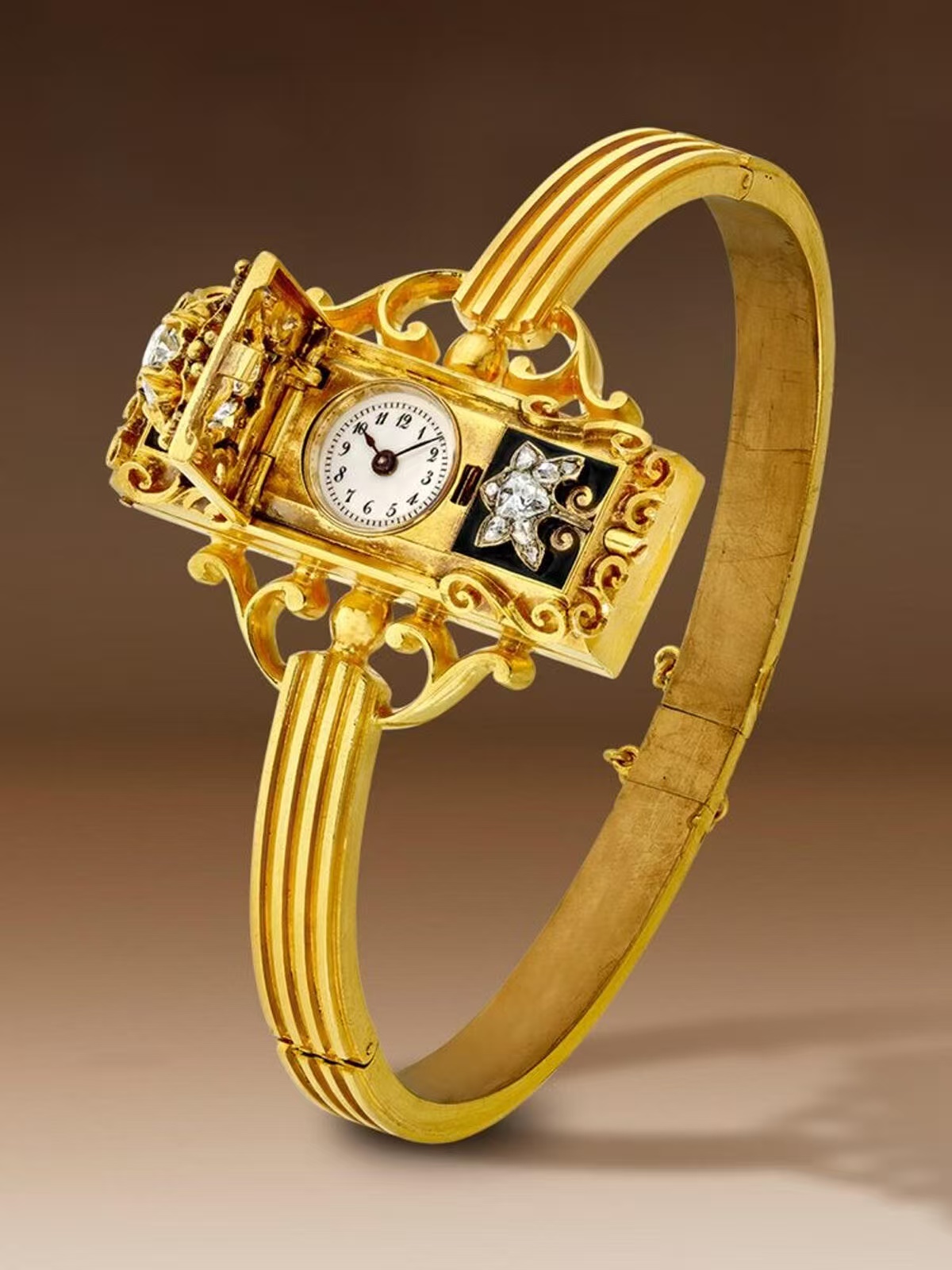The Swiss Watchmaking Saga: A Timeless Journey of Craftsmanship and Innovation
 This isn't merely an industry; it's a living heritage shaped by religious upheavals, technological revolutions, and visionary artisans. The story of Swiss horology is one of deep tradition meeting relentless innovation, creating timepieces that are both functional marvels and artistic masterpieces. Let's explore the key elements that forged this legendary reputation.
This isn't merely an industry; it's a living heritage shaped by religious upheavals, technological revolutions, and visionary artisans. The story of Swiss horology is one of deep tradition meeting relentless innovation, creating timepieces that are both functional marvels and artistic masterpieces. Let's explore the key elements that forged this legendary reputation.
🕰️ The Birth of a Legend: Historical Foundations
The origins of Swiss watchmaking trace back to 16th-century Geneva. In 1541, Reformation leader Jean Calvin's ban on flashy jewelry forced skilled goldsmiths and jewelers to channel their expertise into a new craft: watchmaking. This pivotal moment laid the groundwork for a new industry. By 1601, the Watchmakers Guild of Geneva was established—the world's first—formalizing the profession and ensuring quality standards.
As Geneva became crowded with craftsmen, many relocated to the Jura Mountains. Here, during long winters, farmers supplemented their income by producing components in home workshops. This decentralized system, known as "établissage," was pioneered by Daniel Jeanrichard (1665-1741). This efficient division of labor allowed for specialization and scalability, transforming the Jura region into a watchmaking epicenter. By 1790, Geneva was already exporting over 60,000 timepieces annually.
⚙️ Pioneering Spirit: Key Innovations That Shaped Horology
Swiss watchmakers have consistently pushed horological boundaries with groundbreaking inventions:
-
1770: Abraham-Louis Perrelet created the "montre à secousses", considered the precursor to the modern automatic watch
-
1816: Louis Moinet developed the first chronograph, the "compteur de tierces".
-
1842: Adrien Philippe, co-founder of Patek Philippe, invented the stem-winding mechanism for pocket watches.
-
1926: The first automatic (self-winding) wristwatch was produced in Grenchen.
-
1967: The Centre Electronique Horloger (CEH) in Neuchâtel developed the Beta 21, the world's first quartz wristwatch.
These innovations established Switzerland's technical dominance and responded to evolving consumer needs—from pocket watches to wristwatches, mechanical to quartz technology.
🏭 Enduring Legacies: Stories of Iconic Manufacturers
Several manufacturers embody the Swiss watchmaking spirit through their remarkable journeys:
-
IWC (International Watch Company): Founded in 1868 in Schaffhausen by American engineer Florentine A. Jones, IWC blended American industrialization with Swiss craftsmanship. They've maintained detailed records of every watch produced since their inception, a testament to their commitment to traceability and quality.
-
Chopard: Established in 1860 by Louis-Ulysse Chopard in Sonvilier, the company initially built its reputation on highly accurate pocket watches and timers, even becoming an official supplier to the Swiss Railway Company. In 1976, their groundbreaking "Happy Diamonds" collection, featuring freely moving diamonds between sapphire crystals, won the prestigious Baden-Baden Golden Rose award, elevating them to international luxury status.
-
Manufacture GP Girard-Perregaux: Since 1791, GP has consistently operated, making it one of the oldest continuously running watch manufacturers. They're renowned as one of the few Swiss houses that design and produce their own movements entirely in-house.
🌊 Weathering the Storm: The Quartz Revolution and Swiss Resilience
The 1970s brought the Quartz Crisis, as accurate, affordable Japanese quartz watches flooded the market, threatening the entire Swiss mechanical watch industry. Switzerland's own Beta 21 quartz movement (1967) demonstrated early technical capability, but the industry initially struggled to adapt.
The Swiss response was twofold. First, the Swatch Group (originally under a different name) produced in 1978 what was then the world's thinnest quartz watch at just 2mm, which was also anti-magnetic, shock-resistant, and waterproof. This innovative, affordable quartz watch revitalized the industry. Second, brands like Patek Philippe doubled down on high-end mechanical watches, emphasizing extreme craftsmanship, complex complications, and artistic beauty as values beyond mere timekeeping. This strategy successfully reestablished Swiss watches as objects of desire and investment.
🔄 Modern Marvels: The Continuous Pursuit of Excellence
Today, Swiss watchmaking thrives by balancing its rich heritage with cutting-edge innovation:
-
Blancpain's Fifty Fathoms, created in 1953 for French combat divers, set the standard for modern dive watches
-
IWC continues to innovate with materials like titanium and complications like their perpetual calendar
-
Chopard's L.U.C Quattro (2000) featured a groundbreaking movement with four barrels offering over nine days of power reserve
-
Brands continually explore new materials (ceramics, carbon composites), advanced craftsmanship (skeletonization, enamel dials), and complex mechanisms like tourbillons and minute repeaters.
🔮 Conclusion: A Legacy Worn on the Wrist
The Swiss watchmaking story continues to evolve, driven by its unique fusion of artistic tradition and technological innovation. In an era of smartwatches and digital timekeeping, Swiss mechanical watches endure as symbols of human achievement—reminding us that what we wear on our wrists can be both a masterpiece of engineering and a piece of history.
For collectors and enthusiasts worldwide, owning a Swiss timepiece means becoming part of this ongoing narrative, where every tick honors centuries of craftsmanship while propelling it toward future horizons.
Explore our journal to discover more about specific complications, brand histories, and the subtle details that define true watchmaking excellence.


